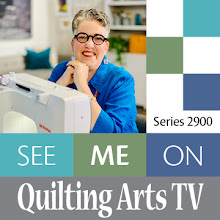Yesterday, I worked on a new, small (about 8x10") wholecloth painted piece – the pansy above. In late March through early April, I will be in The Netherlands to teach 8 workshops. I’m teaching my Wholecloth Painting class several times, and while my host and workshop organizer, Lya Geven, and I were talking, she suggested that I do one flower that was a little more familiar to European students. The ones I usually teach are these – croton leaf, hibiscus and sunflower:
Tulips immediately came to mind, but it was not tulip season. I considered buying a bouquet, but then realized that my local nursery was filled with pansies, and I’d have far more options there. I went there in the fall and shot about a hundred photos, and got one that I liked a lot:
Choosing just the right photo to work with is trickier than you might think. It needs to be well lit, with details well defined. It needs to have a strong focal point. I also try to keep the backgrounds simple and not distracting, but sometimes it is impossible to avoid. Too much stuff in the background can detract, but it can be eliminated when you paint.
When I teach, I have to make sure not to choose a subject that is too complex. Most students in my class take the entire six hours to complete the croton, hibiscus and sunflower (and this is just the painting, not the layering and quilting). These pieces are also about 8x10".
The photo below shows a printout of the photo (on the left), and the first bit of painting on the pansy (on the right).
I
usually trace my lines onto the fabric; this time I just positioned the
fabric (a tightly-woven PFD fabric) on top of my traced line drawing. Tracing the lines onto the fabric is important if you want to do one base color and then paint darker colors on top, because you will still be able to see the pencil lines this way (but you would not be able to see the lines on the printout through the fabric and the base color paint).
My students often have questions about how many colors to mix, and how many tints and shades to prepare. It is tricky to get the right number of colors, and the right values to create depth. You can see my palette in this shot, and get an idea of how many I mixed for this piece so far:
Here is a shot showing a bit more painting done. You can see that I changed the overall color scheme of the pansy somewhat. I find that as long as you keep track of the values, you can do this without a problem. As with traditional quilting, value is far more important than color in the overall effectiveness of the piece.
Here is another shot of how it looks now. I am going to add a few darker values to give the petals more dimension and depth. It’s good to think at this stage about what you are going to add when you free-motion quilt. The thread adds color and detail, too, so you may not need to paint everything. After that, I will move on to the background.




















